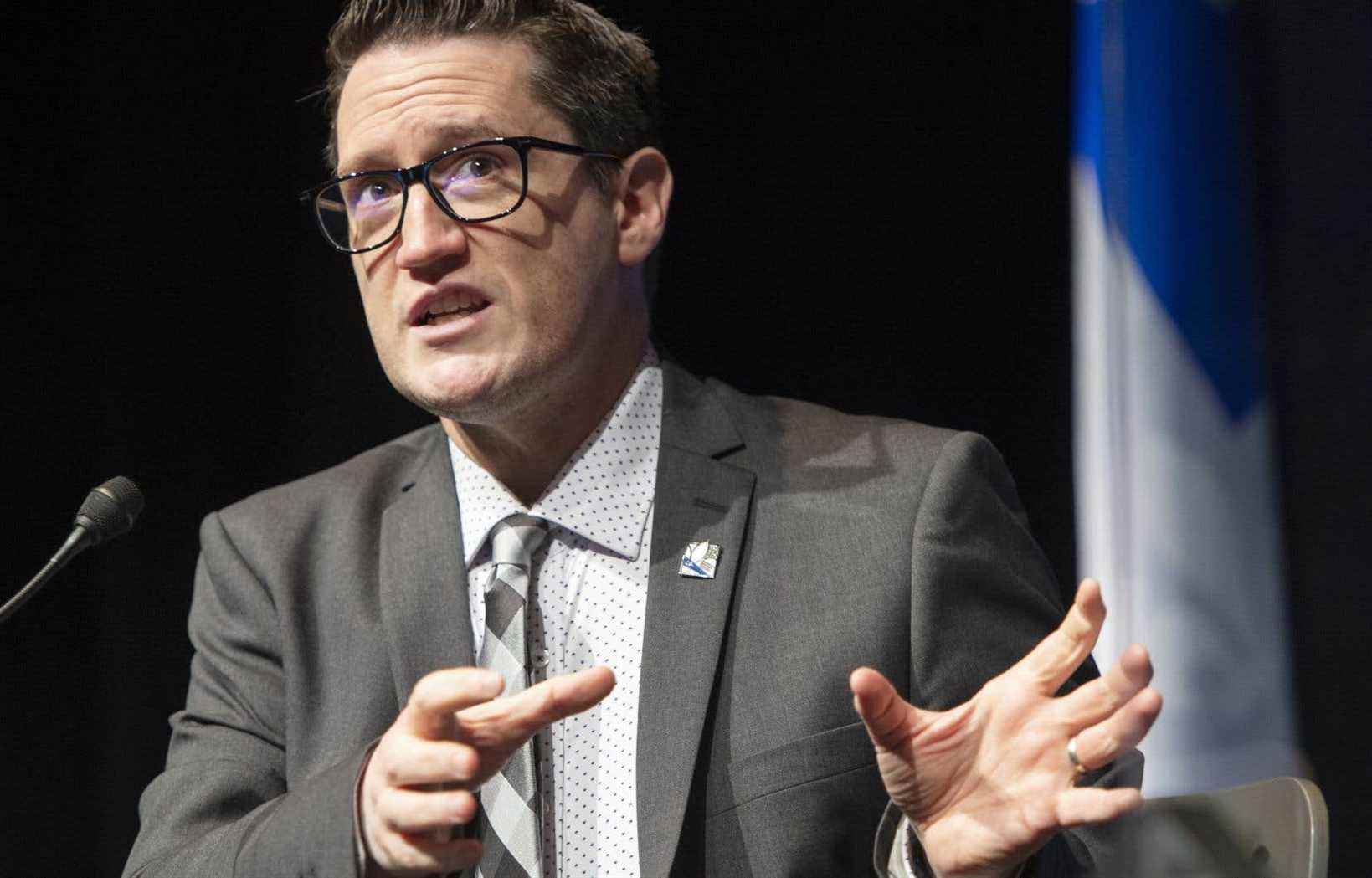A tunnel between downtown Quebec and Lévis is “a great way” to counter urban sprawl, said Environment Minister Benoît Charette on Monday during a visit to the national capital.
The minister met for the first time the mayor of Quebec, Bruno Marchand, the day after a week marked by deep differences between the city hall and the CAQ government.
The bone of contention, the tram, was not the subject of any discussion between the two men. “We ran out of time,” said Minister Charette, who had just arrived from Montreal.
At the podium, the elected caquiste let it be known, like Mayor Marchand last week, that unbridled urban sprawl compromises the achievement of Quebec’s pollutant emission reduction objectives.
“I agree: we have to make significant efforts to counter this phenomenon. The Québec-Lévis tunnel, downtown to downtown, is a great way to achieve this,” said Mr. Charette.
Over the past few decades, the Minister explained, the various projected links between the two shores would have contributed to urban sprawl. “This time, by having a downtown to downtown concept, we will significantly limit the potential for growth in the National Capital Region,” said Mr. Charette.
The assertion goes against the grain of a broad consensus within the scientific community, which wants the third link as presented by the Legault government to contribute to increasing the suburbs rather than slowing down their development.
Tramway and third link
After a corrosive week around the tramway between the CAQ and the City of Quebec, the Minister of the Environment reiterated his government’s sounding and stumbling support for the tramway. “We are the main funder of the project,” he said, recalling the government’s promise to inject “at least” $1.8 billion.
Minister Charette also defended his government, accused of encroaching on municipal powers, last week, by imposing the withdrawal of a 500 m shared track before endorsing the tramway. “It’s not interference, it’s sound financial management,” maintained the minister.
The destiny of the largest public transit project in the history of Quebec seems increasingly linked to that of the Réseau express de la Capitale (REC) within the government.
“The tram is an essential component, inseparable from the whole of a project which sometimes speaks of reserved lanes, which sometimes speaks of a third link”, insisted the minister. “It is a whole that must be considered together. »
Last week, several elected caquistes, including the Minister of Transport François Bonnardel and the Deputy Prime Minister Geneviève Guilbault, deplored that the mayor of Quebec does not take into account the citizens of Saint-Apollinaire and Portneuf in the development of the tramway. .
The government is due to present an “improved” version of the third link in the coming weeks. The cost of the version presented last May was around 10 billion dollars. The tram bill, for its part, has swelled to nearly 4 billion dollars.
Minister Benoit Charette came to Quebec to announce the granting of $49 million to help the city reduce its environmental footprint. Of this amount, the greening of the national capital accounts for $30 million.
The remaining 19 million will be used to reduce polluting emissions from the municipal building stock, estimated at more than 1,100 buildings, and to install electric charging stations.
In its climate plan, the CAQ wants to reduce Quebec’s polluting emissions by 37.5% by 2030 compared to the quantity produced in 1990. of the environment. The next decade will be decisive in achieving our objectives. »
